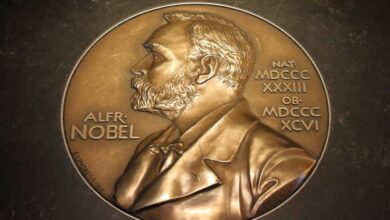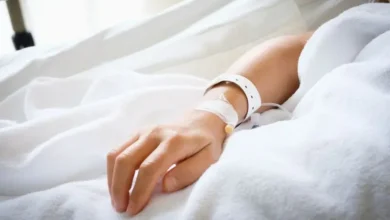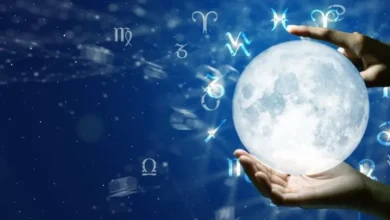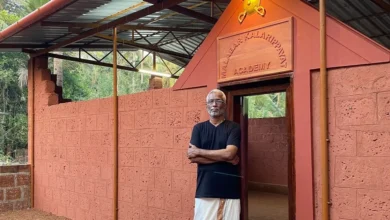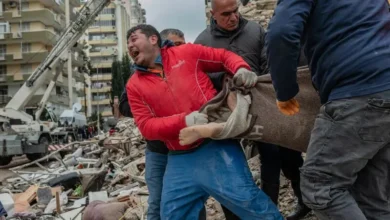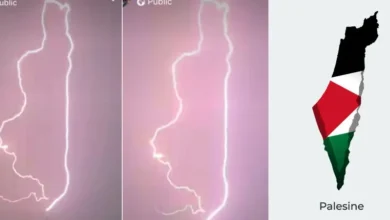‘In the Heart of Another Country’: Diasporic imagination as an act of reclamation
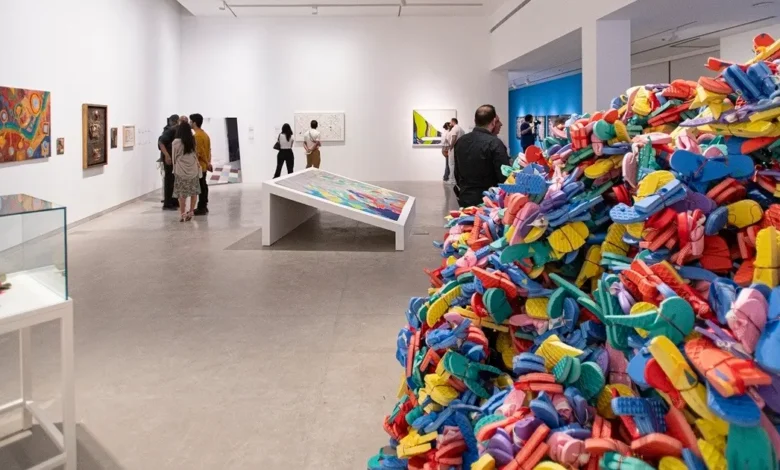
After its debut at Deichtorhallen Hamburg in November 2022, the exhibition ‘In the Heart of Another Country: The Diasporic Imagination Rises’ is being staged at its homebase at the Sharjah Art Foundation (SAF) in a reimagined edition to include new acquisitions and restored works, many of which are on view for the first time.
Being held across six galleries in Al Mureijah Art Spaces, the exhibition features more than 179 artworks by artists across three generations and is on view till September 24, 2023.
In her foreword to the exhibition catalogue, Hoor al-Qasimi says the Sharjah Biennial “has allowed experimentation with modes of artistic practice, different approaches to producing and presenting art and ways to consider urgent issues within our contemporary lived experience.”
Al-Qasimi says the exhibition and the accompanying publication reflect the legacy of the Biennial and the Foundation and that many of the works featured in the collection which were “made in and for Sharjah,” are being shown internationally for the first time.
The title of the exhibition, ‘In the Heart of Another Country,’ is inspired by the memoir of the late artist and author Etel Adnan who writes: “My absence has been an exile from an exile.”
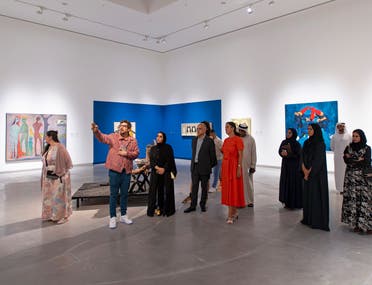
She adds: “Contrary to what is usually believed, it is not general ideas and grandiose unfolding of great events that impress the mind during times of heightened historic upheavals, but rather the uninterrupted flow of little experiences, observations, disturbances, small ecstasies, or barely perceptible discouragements that make up day-to-day living.”
Charting sentiments
While researching, compiling and staging ‘In the Heart of Another Country,’ one key question that kept popping up for Dr Omar Kholeif, Director of Collections and Senior Curator, Sharjah Art Foundation, was the term ‘diaspora.’ Comparing it to the idea of ‘translucence,’ he wonders aloud: “Could it be that the very concept of diaspora be but a mere illusion that is imprinted on us and the artists?”
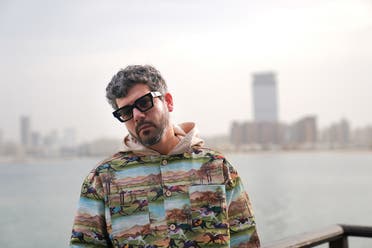
The exhibition thus charts sentiments of longing, memorial, and homecoming though a constellation of artworks that unfold across borders, both real and imagined. In the words of the Curator, the constellation of artworks here – distinct amongst global collections of modern and contemporary art – narrate a culturally situated history from within the heart of the emirate of Sharjah.
The artworks date back from 1935 to the present and have traversed routes from Colombo to London, from Cairo to Zanzibar, through to the foothills of Mount Tamalpais in California (the chief subject for Etel Adnan) and back again.
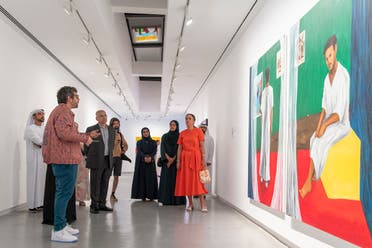
Dr Kholeif spoke to Al Arabiya English, on the challenges he encountered, staging such a massive show from SAF’s own collection.
“Every exhibition poses exciting challenges. Those challenges become propositions – a way of thinking through and navigating an act of storytelling. ‘In the Heart of Another Country: The Diasporic Imagination Rises’ took nearly seven years to bring together. A lot has changed in the world during that time. A young collection such as that of Sharjah Art Foundation is a mutable and evolving project. We are constantly developing to narrate a culturally situated art history that both responds and expands upon the context of the work that we do at the Foundation. This often involves shedding light on overlooked artistic figures from the region and from the ethnic Global Majority, more generally speaking.”
‘Speaking to history and urgencies of present’
Dr Kholeif said the biggest challenge was developing a checklist, while also maintaining one’s acquisition program – identifying the key figures who may come together to narrate a plural and representative art history. “We constantly ask ourselves, who are the key artistic figures that speak both to history and to the urgencies of the present.”
Responding to a query on what feedback did he get from the earlier iteration of the exhibition in Hamburg last year, and what changes did he make for the current show on home ground in Sharjah, Dr Kholeif said: “That is a fascinating question. The exhibition in Hamburg evolved from a desire to contextualize and introduce artistic figures to the European cultural context. One of the main comments that I received was that almost all the artists in the show were entirely new to visitors. I wanted to expand and open-up a worldview that could skew into many different directions. There was a pressing curiosity amongst the local public, many of whom continued to attend all our public events, eager to deepen their knowledge of art’s history.”
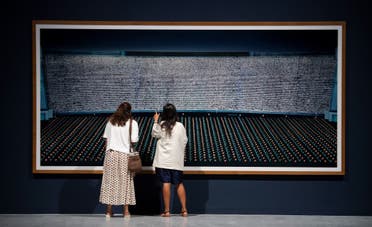
He continued: “There were also streams of beautiful messages from visitors from the South and West Asian diaspora in Germany, as well as of the African diaspora. They expressed the joy of seeing individuals who they felt represented their context exhibited in one of Europe’s major contemporary art halls.”
On the other hand, the proposition to stage the exhibition in Sharjah “presented an evolution.”
“First, the Deichtorhallen is on giant art hall that required a very specific choreography of objects. Here in Sharjah, we had six distinct and specific spaces to work with. This encouraged me to elaborate upon the exhibition’s key themes and to expand them in more detail with new acquisitions and recently restored works of art responding to features of specific galleries.”
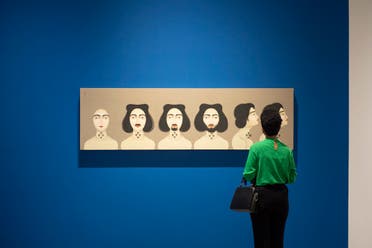
Dr Kholeif further said: “Here, we explore architecture, domesticity, reclaimed portraiture, the incongruencies of ethnography as a practice, and mapping. This allows for visitors to come and experience one individual gallery, leave, contemplate, and come back and have an entirely new experience on the next visit, if they choose to. It is a very special way to view a public collection.”
‘Shared language of creative expression’
“The Diasporic Imagination here is a proposition,” Dr Kholeif said, explaining the context of the exhibition. It’s “one that I articulate at the exhibition’s end; it is an act of reclamation.”
In the selection of artists and works, “the diasporic is not presumed as subaltern, or other, but rather as someone for whom movement in and out of space and time is implicit to their existence. Being, or indeed becoming diasporic can, in this regard, become a site of empowerment, of efflorescing creativity, one that helps generate a shared language of creative expression. It is a condition that is familiar to almost all of us and feels ever more relevant in the context of the exhibition’s return home,” Dr Kholeif added.
“The breadth of the geographies, languages and cultures that are explored in the exhibition is part and parcel of my own seat of research and constant lines of inquiry,” he said, commenting on how these artists of the diaspora attempted to reflect and respond on such a wide geographical, linguistic and cultural arc in their works.
“Every artist expresses their own lived and situated cultural experience through their own mode. What happens when a curator and historian bring these polyphonous expressions together is a kind of confluence, one that suggests that being in the world is a shared and collective endeavor, not of the one, but for the many.”
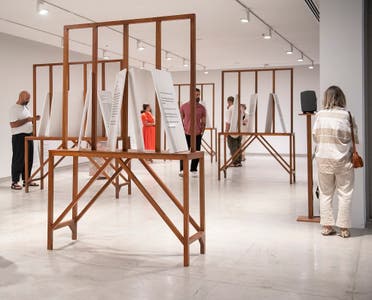
An extensive publication, co-published by Deichtorhallen Hamburg and Snoeck, edited and co-authored by Dr Kholeif and with contributions from Bani Abidi, Skye Arundhati Thomas, Stephanie Bailey, Anne Barlow, Lubaina Himid, Chris McCormack, Hrair Sarkissian and Sofia Victorino, with forewords by Hoor al-Qasimi and Dirk Luckow, as well as an afterword by Nawar al-Qassimi, is available at the SAF stores.
Alongside ‘In the Heart of Another Country,’ SAF will offer a series of workshops inspired by the artists featured in the exhibition as part of its Learning Program this summer and also as a public closing event reflecting on the themes of the exhibition with key scholars and academics.

